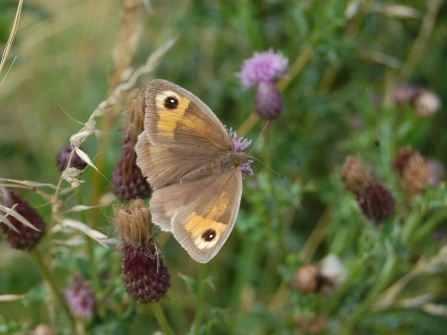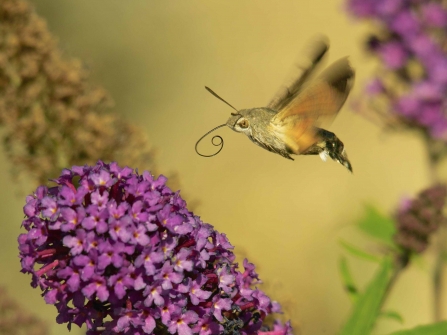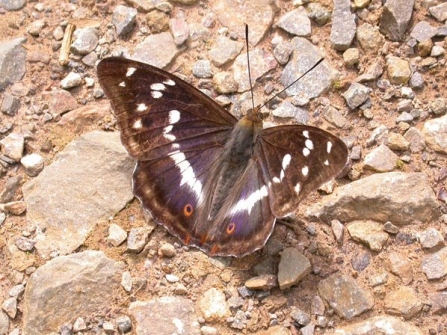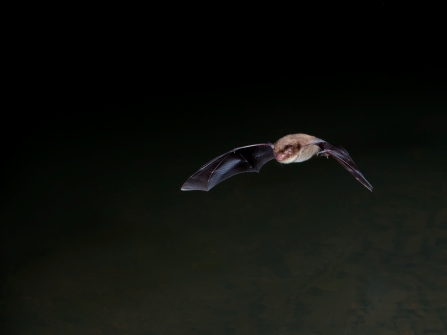Our top 10 wildlife sightings in July
Bog asphodel
As the name suggests bog asphodel grows in damp, boggy areas and can be seen at heathland reserves including Inkpen Common and Snelsmore Common. The tall spikes of yellow flowers bloom in summer.
Broad-leaved helleborines
Broad-leaved helleborines are the most common and widespread of the helleborines. They grow in deciduous woodland, particularly beechwoods like those at Warburg Nature Reserve.
Did you know, the nectar is thought to have a narcotic effect on the wasps that pollinate these flowers!

Meadow brown
Meadow brown butterflies are very common and widespread. Their caterpillars feed on grasses so why not allow an area of your garden to grow long. You may even find some wild flowers appear among the grasses.
These butterflies, particularly female meadow browns, may be confused with gatekeeper butterflies, but those have two white dots on their wings instead of one and tend to rest with their wings open.

Hummingbird hawkmoth
Hummingbird hawkmoths are so named because they resemble a hummingbird as they hover (audibly) to feed on flowers before darting to the next. They prefer to feed on plants with long flowers like viper’s-bugloss, red valerian, honeysuckle or buddleia so keep an eye out if you have any of these in your garden.
Hummingbird hawkmoths fly during the day and if you do see them in your garden, keep a regular eye out as they’re known to return to the same flowerbeds at the same time of day to feed.

Purple emperor butterfly. Photo by Tim Watts
Purple emperor
Look closely at the tree tops in woodland nature reserves, including Finemere Wood, Rushbeds Wood and Warburg Nature Reserve, to see if you can catch a glimpse of a purple emperor. These butterflies are feeding on honeydew, a sweet liquid produced by aphids, or sap from oak trees.
You may be lucky to see a male, which has a purple sheen to their wings, come to the ground to feed on moisture and salts found in puddles and animal dung.
Crickets and grasshoppers
Grasslands can be filled with the buzzing of crickets and grasshoppers in summer. If you get close enough to see them try this general rule to decide which is which: crickets have long antennae and grasshoppers have short antennae. Have a wander through Yoesden and watch them hopping out of your way.
Small red damselflies
Small red damselflies are found near heathland bogs, like those at Decoy Heath, and calcareous fens such as Parsonage Moor. They have red legs in contrast to large red damselflies which have black legs. Look for these rare damselflies flying on warm, still days.

Dale Sutton 2020 Vision
Bats
At dusk on warm evenings, look out for bats flying around hunting for insects to eat. You can often spot bats over your garden – a tiny pipistrelle can eat around 3,000 insects every night!
Near rivers you may see Daubenton’s bats (above), which fly low over water to scoop up insects near the surface with their feet or tail.
Slow worms
Slow worms are actually legless lizards, not worms or snakes. They don’t tend to bask in the sun like other reptiles, instead they stay under log piles or in compost heaps where rotting material provides warmth.
If you do see one, don’t try to pick them up, they’re not only a protected species but may shed their tails as a defence mechanism.
Stonechat
Look for stonechats perched on the top of bushes, particularly in heathland areas like those at Greenham Common or Sydlings Copse.
The birds are about the size of a robin. The males have a distinctive black head and bright white collar. Their call sounds like two stones being tapped together.
Stay up-to-date with our work
Sign up below to receive the latest news from BBOWT, tips about how you can help wildlife, plus information on how you can get involved.

